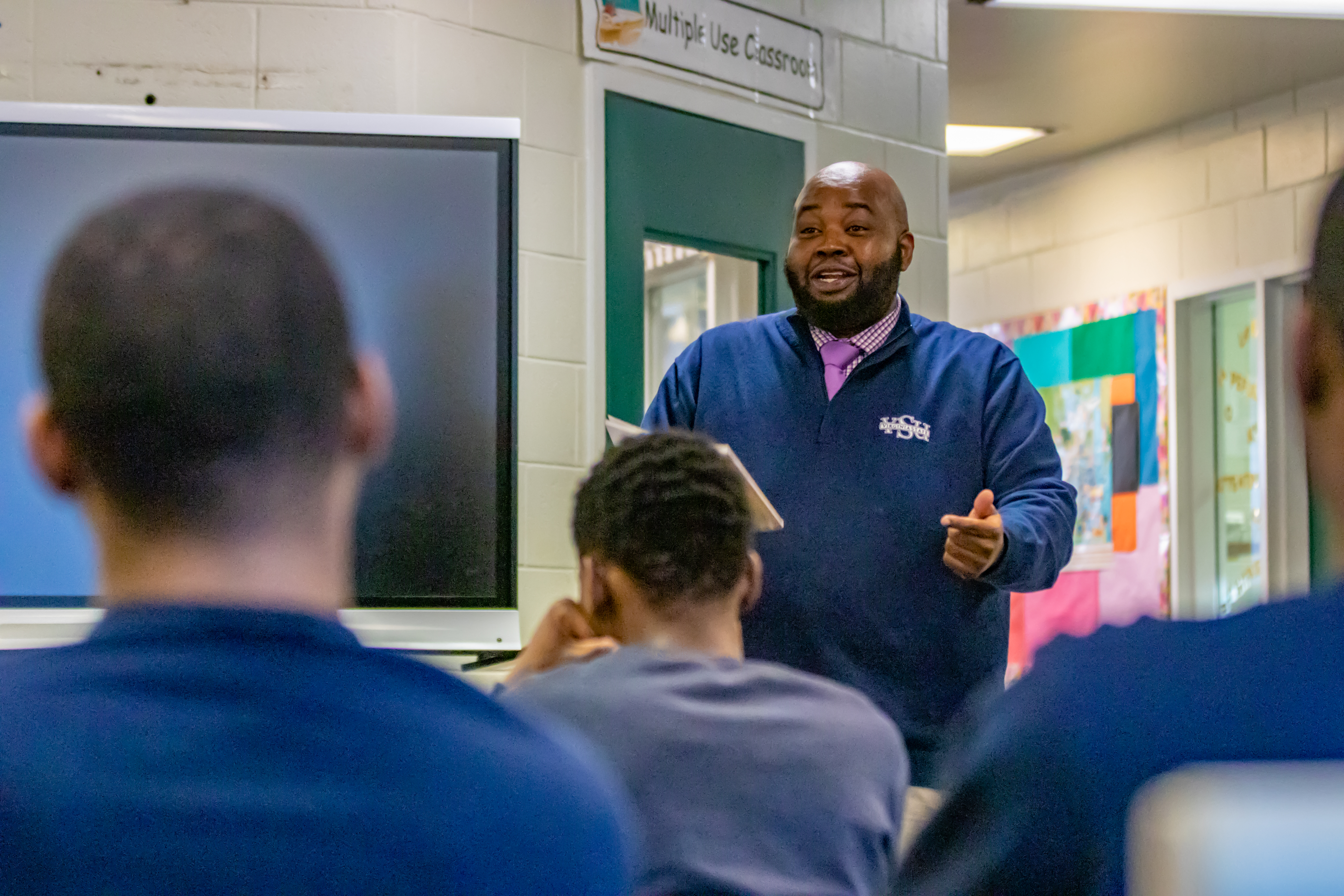Last month, Rodney Robinson was named National Teacher of the Year. Robinson works at Virgie Binford Education Center at the Richmond Juvenile Justice Center in Virginia. There he “creates a positive school culture by empowering his students – many of whom have experienced trauma – to become civically-minded social advocates who use their skills and voices to effect physical and policy changes at their school and in their communities.”
Robinson works hard to meet the needs of his students both academically and emotionally; he seeks to build their confidence as he encourages them to examine their lives and where they are headed. He told NPR that “it’s important that students have teachers and people who look like them, who think like them, who can understand their experiences in life and guide them to what they need to be.”
Studies have suggested that students can benefit from having teachers who mirror them in gender and race. For example, when black children have a black teacher between third and fifth grades, boys are significantly less likely to drop out of high school, and both boys and girls are more likely to go to college.
Of course, teachers who don’t reflect their students’ color and gender have also had success in their classrooms. That said, what should a teacher do when they don’t “match” the students they serve?
Thomas Dee, a Professor of Education at Stanford, tells teachers to overcome boundaries with the following: “Signal to students your deep faith in their capacity to learn, coupled with your high expectations that they’ll do great things, full stop.”
Sometimes, differences between teachers and students can go beyond gender and skin color to socioeconomic disparity. Patricia Maloney, an Associate Fellow at the Institute for Advanced Studies in Culture, conducted a sociological study on charter schools published in the book The Content of Their Character. She observed that teachers at lower-income schools often try to impart not only knowledge but also “discrete systems to teach the students middle-class cultural capital.” Understandably, this can provoke resentment from students and their families when teachers unintentionally imply that what students have at home is somehow “worse.” However, Maloney found two elements that made a significant difference in this dynamic: candor about differences and respect for students’ home life.
“They [the students] appreciated when teachers would be clear and authentic about the fact that they knew that their backgrounds were different,” Maloney said in a recent interview. “They wanted the teachers to listen and, in some ways, honor the struggles that the students had to face to get to school every day.”
Part of honoring those struggles is acknowledging that whatever challenges they may face there, students’ homes provide great value.
Maloney said:
The teachers who said, “Look at how far you’ve come, look at the struggles that you face,”… having a mindset that honored the skills and the knowledge that the students did have—and being really overt and really clear and saying, “Yup, I’m white; you’re not;… you’re lower-income; I’m not;… I don’t know what your life is like, but let me tell you what I do know about, and you can take what you will. Know that I still honor what you have at home, but I’m just giving you a different set of skills” … I think that that was one of the key things that I saw happen at really effective [low income, predominantly minority] charter schools.
It can be tempting to ignore differences when they provoke feelings of awkwardness. But Maloney’s findings suggest that frankness is better than not addressing the differences or pretending they don’t exist. And truly honoring the contributions of a world different from one’s own is a way of showing that respect should go both ways, in the classroom and in life.

